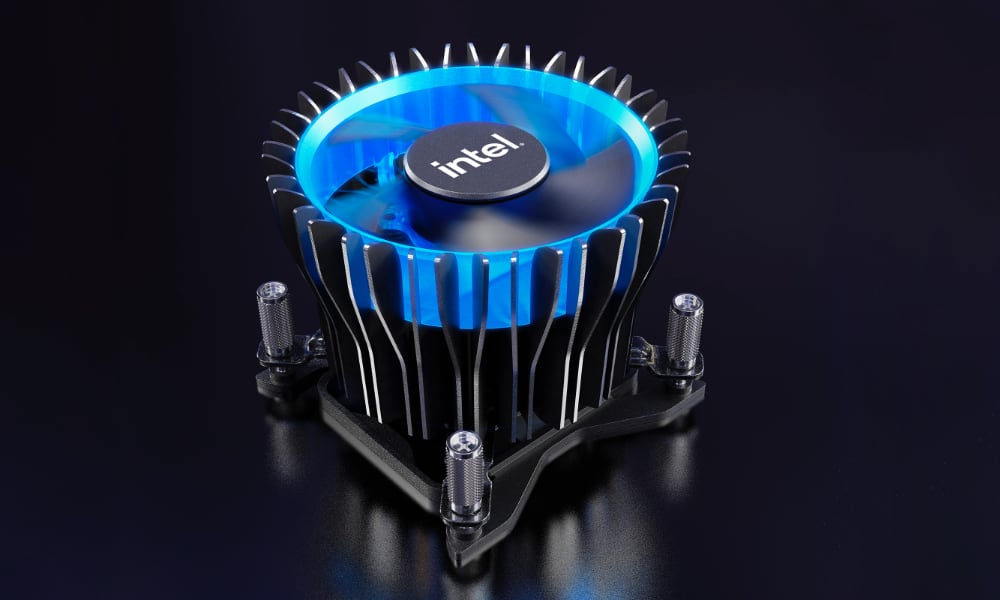Is Intel’s New Core i9 Chip Actually Faster Than the Apple M1 Max?
 Credit: Apple
Credit: Apple
Toggle Dark Mode
As insanely powerful as Apple’s latest M1 chips are, it was only a matter of time before others figured out how to match them in raw performance, and now Intel is touting its latest high-end laptop chip as outpacing the high-end M1 Max found in the latest 14- and 16-inch MacBook Pro lineup.
Intel unveiled the new 12th-gen chip at CES 2022 this week, claiming not only that it beats out Apple’s best silicon, but that it’s the “fastest mobile processor ever,” period.
The Intel Core i9-12900HK is the company’s flagship chip, so it’s no surprise that it’s putting its best foot forward here. The chip is built using Intel’s own 7nm process, which it claims is equivalent to the TSMC 5nm process used for Apple’s latest chips. Intel’s Core i9 also packs in a 14-core CPU with six performance cores and eight efficiency cores. This gives it a Turbo Boost frequency of 5.0GHz.
By comparison, Apple’s most powerful 10-core M1 Max chip uses eight performance cores and two efficiency cores. While Apple doesn’t like to talk about CPU clock speeds, the M1 cores also only operate at 3GHz, so even though Intel’s chip packs in fewer performance cores, the Turbo Boost speeds allow it to accelerate beyond what the M1 Max is capable of.
While it sounds like Intel is boasting some pretty impressive performance numbers, these also come at a pretty high cost.
The Catch with the New Intel i9
We already know that Intel’s chips are power-hungry monsters, and this new i9 is no exception. In fact, it looks like Intel has taken the reins off, choosing to sacrifice all hope of power conservation in exchange for the maximum possible performance.
This is in stark contrast to Apple’s strategy for its M-series chips, which are as much about sipping power and running cool as they are about delivering top performance. When Apple announced the M1 Pro and M1 Max last fall, it spent at least as much time talking about how little power they used as it did about how fast they were.
In fact, Apple never said the M1 Max was faster than every Intel configuration out there — it merely promised to deliver at least the same performance at substantially lower power levels. As we wrote in October:
The name of the game for Apple here was more about power efficiency than raw performance, as Srouji admitted that even the M1 Max doesn’t offer any huge performance gains over the top-end PC laptop discrete GPUs, but what’s important is that it does it with 70% less power, and therefore less heat, and less resulting fan noise.
Intel, of course, is avoiding this side of the discussion entirely. You won’t find words like “energy” or “consumption” anywhere in its press release, and the only mention of wattage is for its lower-end P-series and U-series chips, designed for “the latest ultra-thin-and-light laptop designs,” and it’s safe to say that these won’t even come close to outclassing Apple’s M1 Max.
Digging into the specs, however, shows that the Core i9-12900HK draws up to 115W when running at its highest power levels. That’s an order of magnitude higher than Apple’s M1 Max, which peaks at around 35W.
Put simply, Intel’s newest flagship laptop CPU isn’t something that’s likely to fit into a laptop anytime soon. After all, just look at the kind of heatsinks that Intel is still supplying for its Core i9 chips.
Granted, this is supplied with Intel’s desktop CPUs, which peak at around 200W, but it’s still pretty safe to say that the Core i9-19200HK isn’t going into any laptop that doesn’t come with a pretty hefty fan. Intel has lower-end chips for MacBook-sized laptops.
There’s also the question of battery life and whether Intel laptops will need to be throttled when they’re not running on external power. As Apple pointed out when introducing the M1 Pro and M1 Max, many Intel laptops already slow down when running on battery, and one of the biggest benefits of Apple’s silicon is that it runs at such low power levels that it can provide peak performance whether it’s plugged in or not — and still deliver hours of battery life.
Finally, there’s also the question of graphics performance. Intel’s chips have never included powerful GPU cores, since it prefers to leave that to others like Nvidia and AMD. The newest 12th-gen CPUs are no exception. They include basic integrated graphics that should be fine for everyday use, but won’t provide nearly the power necessary for professional workflows, or even serious gaming.
Once Apple Silicon was ready, however, Apple basically divorced the graphics card industry, building its own powerful GPU cores instead, which by all reports have proven themselves more than up to the challenge of holding up against some of the most powerful gaming PCs.







